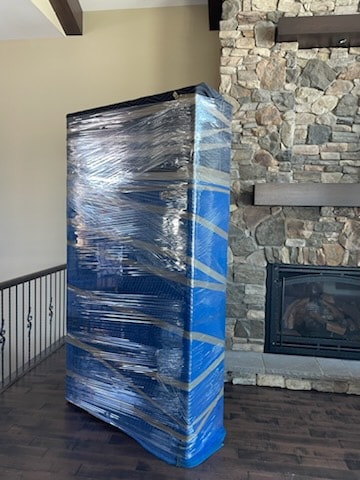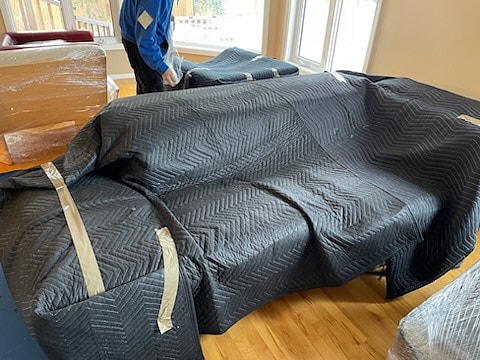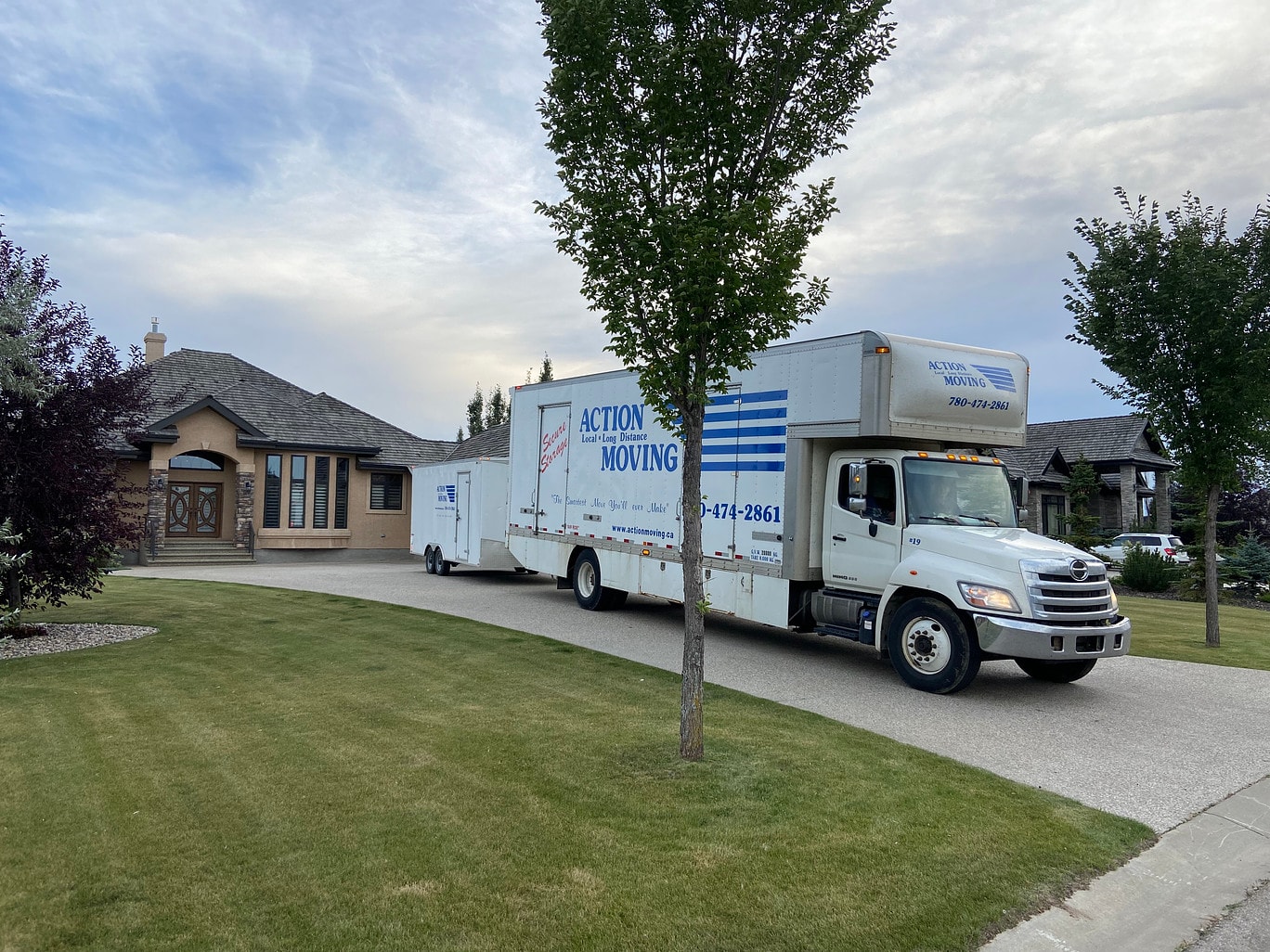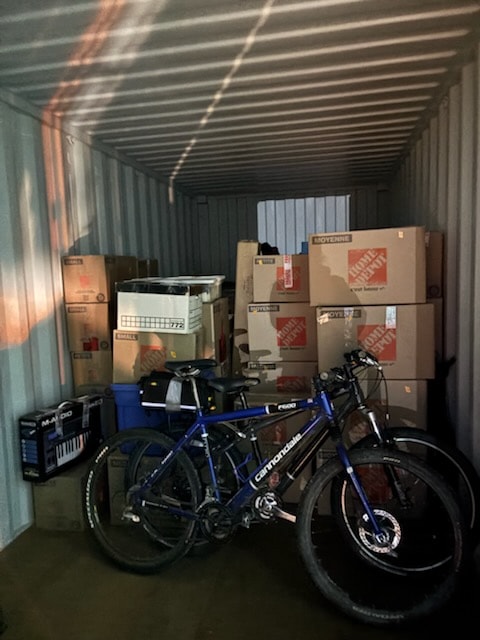Are you planning a move to Edmonton? Our Edmonton moving checklist provides a step-by-step guide to ensure you cover all tasks from start to finish.
Key Takeaways
- Start your moving preparation early with a detailed checklist to minimize stress and ensure nothing is overlooked.
- Research and compare moving companies thoroughly to find the right fit for your budget and needs before finalizing any decisions.
- As you settle into your new home, unpack essentials first and connect with neighbours to build a sense of community and comfort.
Plan Your Move Early

Initiating your move early can significantly reduce stress and lead to a smoother overall experience. Planning gives you ample time to tackle any challenges that may come up, avoiding last-minute headaches. Start by creating a moving checklist that details tasks for the weeks leading up to your relocation. This checklist acts as a roadmap, guiding you through each stage and ensuring no task is forgotten.
Establishing a move date helps organize subsequent tasks effectively. Once you have a date, create a digital folder or a moving binder to keep all related documents in one place for easy access.
Having your documents organized minimizes confusion and makes the moving process smoother. With these initial steps in place, you’ll be well on your way to a successful move.
Research Moving Companies
Researching your moving options is key to a successful transition. To confirm their reliability, check moving companies’ licensing and insurance status. Evaluate companies based on location, pricing, and your specific needs.
Request at least three estimates from different moving companies to compare pricing and services. Use the data to make an informed decision, considering estimates, services offered, and company reviews.
Eight Weeks Before Moving Day

At eight weeks before moving, start decluttering and organizing your belongings. This can significantly reduce the amount to move, making the process more manageable.
- Thoroughly evaluate your items, including cupboards and drawers, to find what to dispose of.
- Involve children by asking them about their toys and helping them learn to part with unused items.
- Creating a moving binder at this stage helps organize all essential documents, estimates, and receipts. Having everything in one place makes it easier to track progress and ensure you don’t miss any details.
Declutter and Organize
Focus on less frequently used spaces like attics or garages to reduce the overwhelming nature of decluttering. Sort out unwanted items and consider having a garage sale or listing them online to offset moving costs. Donating items to local charities promotes a more sustainable move.
Including your children in decluttering can teach them to discard unused items. Thoroughly evaluating all belongings, including cupboards and drawers, helps identify items to dispose of and makes packing more efficient.
A moving binder keeps you on top of details, ensuring a smooth transition.
Six Weeks Before Moving Day

Six weeks before moving, finalize details.
- Notify friends and family, and schedule a get-together to share your plans in the next few weeks.
- If renting, notify your landlord to avoid losing deposits. Also, book a moving van and start collecting free boxes.
- Gather packing supplies and research packing hacks to maximize space and efficiency. These preparations ensure a smoother moving day.
Book Your Moving Company
Book your moving company well in advance, especially during busy seasons. Compile all moving-related documents, including estimates and receipts, in a single binder. Thoroughly review the company’s terms and conditions before signing.
Double-checking details with the moving company helps avoid last-minute confusion or delays, ensuring a smooth, stress-free moving day.
Gather Packing Supplies
Essential packing materials include cardboard boxes, tape, bubble wrap, packing paper, and markers. Collect these from local businesses like grocery and liquor stores to save costs. Use wardrobe boxes for clothing to minimize wrinkling and simplify packing.
Research effective packing methods online to maximize space and efficiency. These tips help you gather necessary supplies and pack belongings safely and efficiently.
Four Weeks Before Moving Day
Four weeks before moving, change your address and transfer utilities—contact utility providers to schedule disconnections and reconnections for a smooth transition.
These tasks ensure you continue receiving important mail and information at your new home. Early planning helps avoid disruptions in service or lost mail.
Change of Address
Inform essential services about your address change, including Canada Post, banks, and insurance companies. Initiate the change of address process with the Post Office to prevent mail loss. Submit a form before moving to ensure your records are updated.
Set up mail forwarding to ensure continued mail delivery. Notify magazines, clubs, and creditors about your new address for uninterrupted service. Inform your insurance company to update records.
Transfer Utilities
Contact local utility providers to arrange service transitions at your new home—schedule disconnections and reconnections to ensure a smooth transition. Early planning helps avoid service disruptions.
Contacting utility companies beforehand ensures everything is in place when you move in, facilitating a smooth transition and avoiding last-minute issues.
Two Weeks Before Moving Day
As moving day approaches, pack non-essential items and prepare an essentials box. Pack less frequently used items like seasonal articles, books, and small appliances. Return all borrowed items before the move.
Prepare an essentials box with toiletries, clothes, important documents, and snacks. This will ensure that you have the necessary items that are easily accessible during the move.
Pack Non-Essential Items
- Pack less frequently used items like seasonal articles, books, and small appliances two weeks before the move.
- To stay organized, pack one room at a time.
- Use wardrobe and dish barrel boxes for large items and mattress covers to protect delicate items.
- Backup computer data before moving to avoid losing important information.
- Collect free boxes from restaurants, liquor stores, groceries, and office supplies.
- Label each box for easier unpacking.
Prepare an Essentials Box
- Your essentials box should contain toiletries, clothes, important documents, and snacks.
- Arrange for a babysitter to keep the children occupied during the move or put the kids to work!
- Withdraw cash on a moving day to tip your movers or handle unexpected expenses.
The Week of Moving Day
- Clean and organize your old home in the final week before your move. This is courteous and will leave a positive impression on the next occupants.
- Defrost your refrigerator 24 hours before moving and clean it.
- Pack the rest of your home room by room to ensure everything is organized.
- Confirm the moving time with the moving company to avoid last-minute surprises.
Confirm Details
Reconfirm the moving date and time with the company to avoid last-minute surprises. Open communication with moving professionals ensures a smooth transition and addresses last-minute changes or confirmations.
Moving Day

Moving day has arrived, and it’s time to implement your planning.
- Protect floors and carpets from damage.
- Ensure all appliances are empty.
- Pack kitchen utensils and other items in clearly labelled boxes to make unpacking easier.
- Please work with the movers by answering their questions and indicating where to place boxes and furniture.
- Report any damages to the moving company immediately and notify them of missing items.
- Do a final walk-through to ensure nothing is left behind before handing over the keys.
Direct Movers
Arrive at your new home before the movers to supervise and answer any questions. Directing movers on where to place boxes and furniture makes the unpacking process smoother, ensuring everything is placed in the correct rooms and saving time and effort later.
Clear communication with professional movers avoids confusion and ensures all belongings are handled carefully. This is crucial for a smooth transition and preventing mishaps. Utilizing professional moving services can further enhance this process.
Final Walk Through
Conduct a thorough final walk-through of your old home to ensure nothing is left behind, and everything is in good condition. Confirming details with the moving company beforehand helps avoid last-minute surprises and provides a smooth process.
Settling Into Your New Home
Once the movers have left, it’s time to settle into your new home. To make your new house feel livable immediately, begin by unpacking essential items, such as your bed and toiletries. Focus on crucial rooms like the kitchen and bedrooms to ensure you have a comfortable environment from the start.
Meeting your new neighbours is vital in building a sense of community. Introduce yourself and participate in local events to start forming connections in your new neighbourhood. This will help you feel more at home and integrated into your new community.
Unpack Essentials First
Start unpacking your essentials box, including toiletries, clothes, important documents, and snacks. Focus on unpacking essential rooms like the kitchen and bedrooms to make your new home feel livable. Ensure that unpacking progresses swiftly to settle in as quickly as possible.
By tackling the most critical areas first, you’ll create a comfortable and functional living space right from the start. This approach will help you ease into your new environment and reduce the stress of moving.
Summary
Moving to a new home in Edmonton can be a complex process, but with the right planning and preparation, it can also be a smooth and exciting journey. From early planning and budgeting to decluttering, packing, and settling into your new home, each step is essential for a successful move. Remember to personalize your space, maintain your new home, and prepare for Edmonton’s harsh winters. With this comprehensive moving checklist, you’re well-equipped for a seamless transition to your new life in Edmonton.
Frequently Asked Questions
How early should I start planning my move?
To ensure a smooth transition and avoid last-minute stress, start planning your move at least eight weeks in advance. Early preparation will set you up for success!
What should I include in my moving binder?
Your moving binder should be your go-to resource, so include important documents, estimates, receipts, and a detailed moving checklist to keep everything organized and stress-free. Staying organized is key to a smooth move!
How do I find a reputable moving company?
To find a reputable moving company, research their licensing and insurance, solicit multiple estimates, and read customer reviews. Taking these steps will help you choose a trustworthy mover with confidence!
What should I pack in my essentials box?
Make sure your essentials box includes toiletries, clothes, important documents, and snacks to help you settle in comfortably right away! Having these key items on hand will make your transition smoother and more enjoyable.
How can I prepare my home for Edmonton’s winters?
Prepare your home for Edmonton’s winters by ensuring proper insulation, upgrading outdated materials, maintaining your heating systems, and stocking up on essential winter supplies like shovels and ice melt. Taking these steps will keep you warm and safe all season long!
